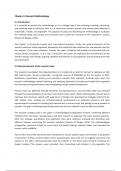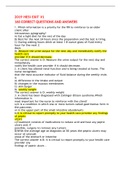Scriptie
Chapter 3.Research Methodology Chapter 4. Results and Analays Chapter 5. Conclusion
- Instelling
- Hogeschool Van Amsterdam (HvA)
Chapter 3.Research Methodology included general elements, sub questions and main ehtical consideration and parts of the research Chapter 4. 3 sub-question and their answers plus analsys Chapter 5. Conslusion of the whole market entry research
[Meer zien]





